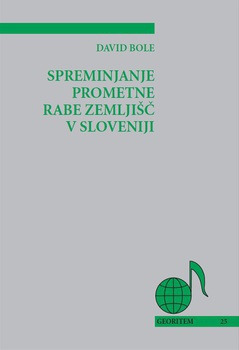Spreminjanje prometne rabe zemljišč v Sloveniji
It is clear that different types of the population's mobility have an impact on the transportation land use and thereby shape our living environment. According to the land cadastre data Slovenia has 465 km2 of transportation land use, which represents more than 2 % of the country's surface. The transportation land use areas are expanding in the last decade, although slower than other built-up areas. The transportation land use analysis on the state level indicates those areas of Slovenia, where the level of transportation land use has risen the most. These are areas with a new transportation infrastructure (roads, railroads), tourist and some other (sub)urbanized areas. The results have shown that local political and planning decision-making represents an important factor in the increase of the transportation land use in Slovene towns.
The analysis of the suburbanized settlements in the vicinities of Ljubljana and Maribor confirms the thesis that newer, suburbanized settlement parts are more burdened by the transportation land use, especially by the use of cars. Suburbanized settlement parts boast 10 to 50 % more of the transportation land use than the older village nucleuses. The analysis of city areas has shown that older apartment complexes were not constructed for cars, but rather for means of public transportation, bicycles and on-foot traffic. Automobilisation led to the construction of garages and parking places, usually situated between apartment buildings in joint courtyards and green areas. The construction of new buildings has taken into account the minimum parking standards, which is clearly shown by the analysis of the transportation land use in the case of several newer apartment complexes. The issue at hand is not just the vast surface area intended for cars, but also the unavailability of more sustainable transportation solutions and not enough focus on the attractive cycling infrastructure and pathways.
Due to the expansion of transportation land use intended for motorized transportation the relationship of the population towards car use and the broader reasons for it were determined. It was established that the population is in theory environmentally aware, but not as much in practice, since they regard their vehicular infrastructure having greater value than other factors. We tried to determine the economic, social and political reasons for the process of automobilisation. The economic reasons lay in the increase of the population’s purchasing power and the unique system of mandatory travel reimbursement by the employer, who subsidises car use. Social reasons for automobilisation include the changes of living and work habits, characteristic of the post-industrial society, whereas the political reasons are the construction of the motorway infrastructure, which was in the past a legitimate priority, and at the same time the neglect of the public transport and more sustainable non-motorised forms of transportation.
Downloads

Series
License

This work is licensed under a Creative Commons Attribution-NonCommercial-NoDerivatives 4.0 International License.
